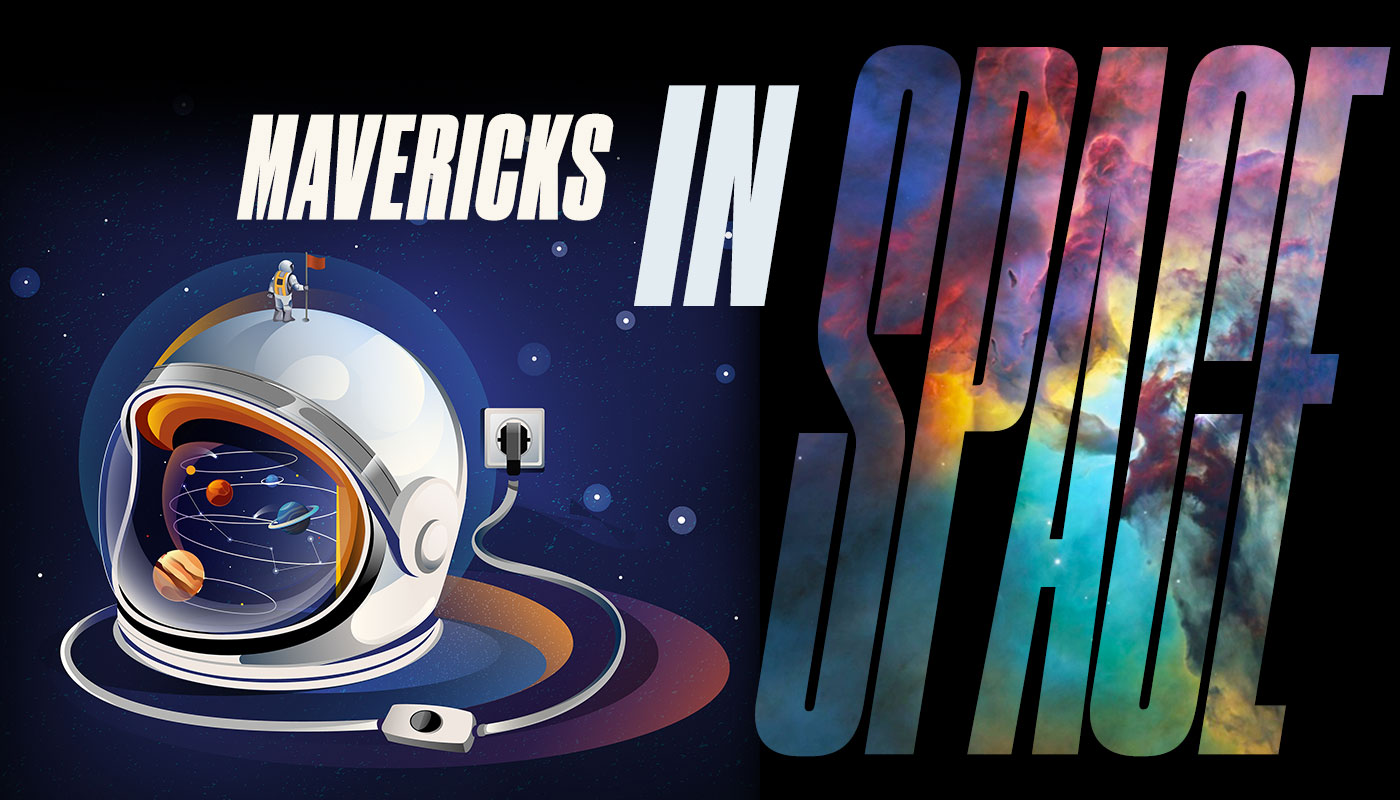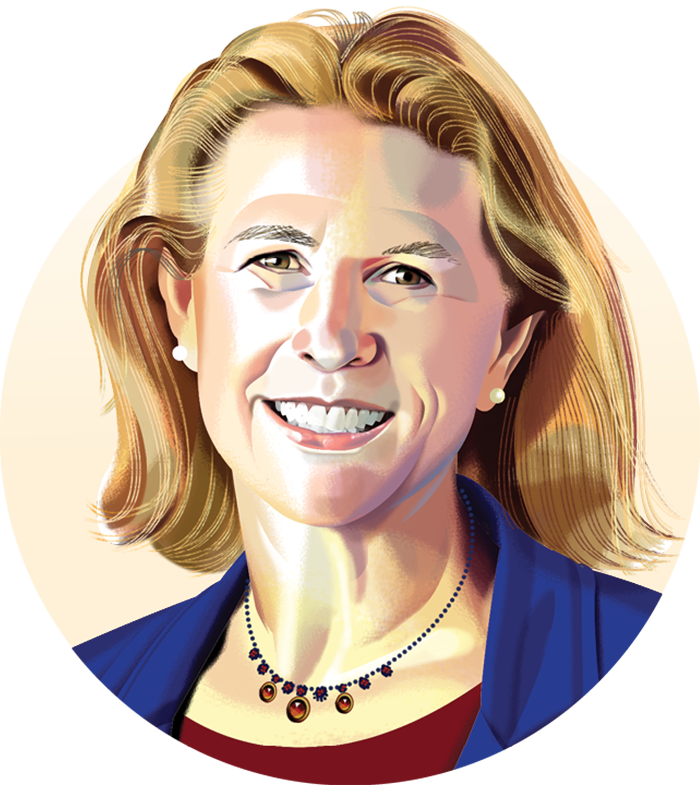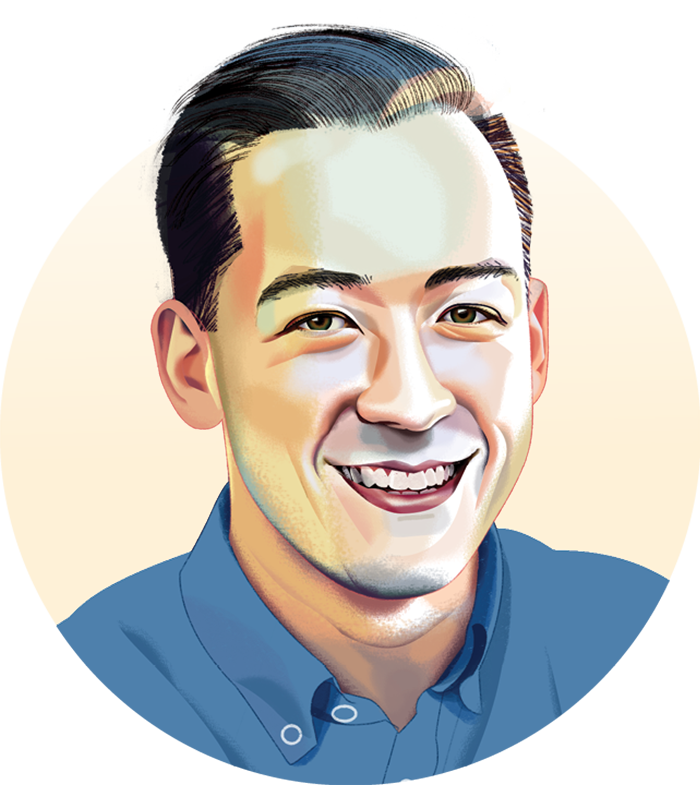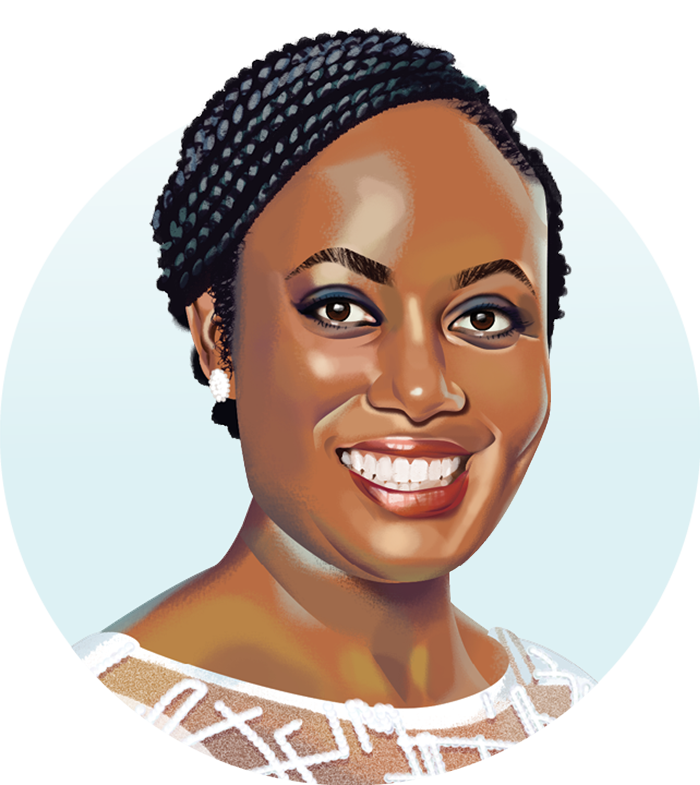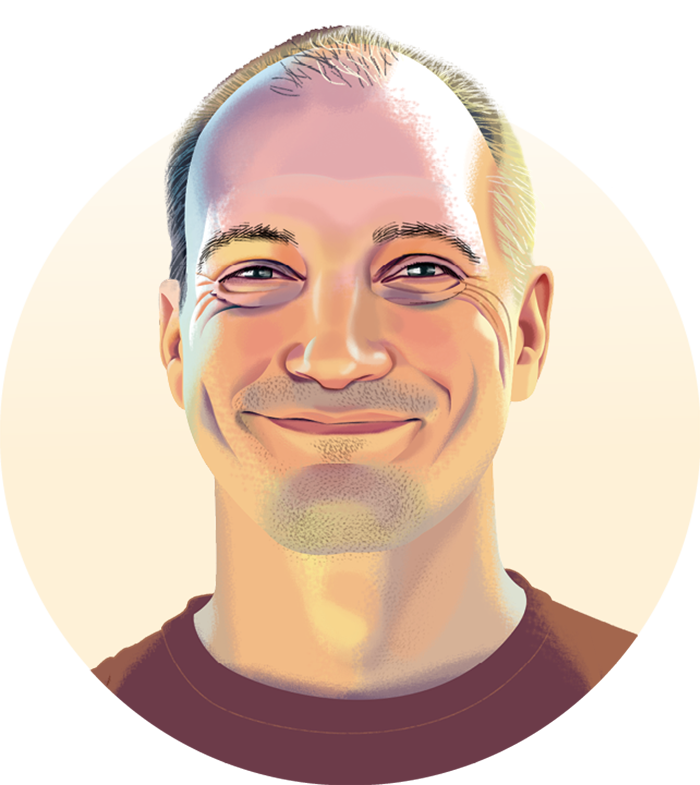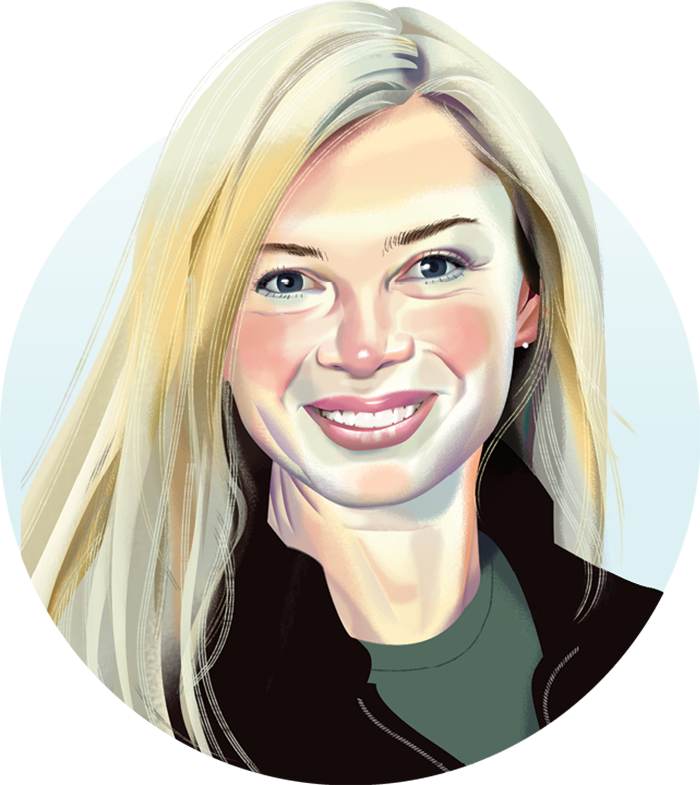Italian astronomer Galileo Galilei is often credited as the first human to point a telescope toward the cosmos. He used the instrument to discover rocky craters on the moon, prompting philosophical questions about life beyond Earth. Since then, scientists have discovered thousands of exoplanets beyond our solar system and estimate that there are billions more in our galaxy alone.
Astronomers searched the skies from ground level, capturing images of the dust and light beyond our atmosphere. Technological advancements of the 20th century propelled our investigations to the furthest corners of the universe. As we launched mechanical and manned missions into orbit, nations competed for prime real estate on the final frontier. Within decades, space exploration became a global industry.
Despite all that advancement of knowledge, questions about our existence remain. Is humankind alone in the universe? How did our existence begin? What exactly is the universe made of?
Employed by companies at the leading-edge of astronautics, UTA students and alumni work to answer these questions and far more, seeking knowledge and resources that will benefit humanity. From collecting soil samples on Mars to analyzing the chemical composition of Venusian clouds, Maverick innovators are helping to decode the mysteries of the universe.
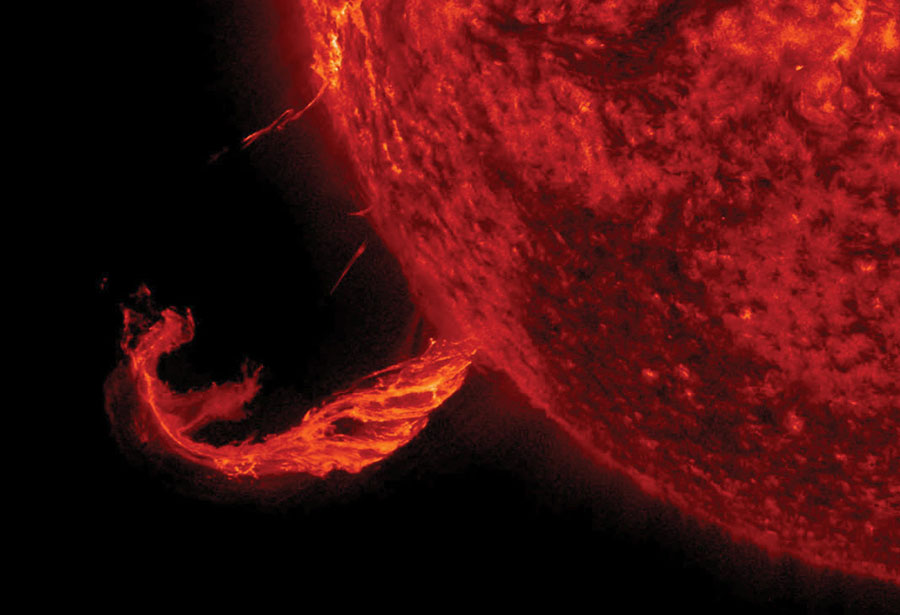
When strong enough, coronal mass ejections like the one pictured here can impact satellites, radio signals, and electrical grids.
SPACE STORMS
In December 2021, NASA launched its most powerful telescope to date, the gold, mirror-plated James Webb Space Telescope. Its mission is to catch glimpses of light from ancient, cloudy galaxies and uncover hidden truths about our universe. Like air traffic controllers before a plane’s ascent, two days before the Webb Telescope launch, NASA’s crew was watching the weather—in outer space.
Approximately one to four times per day, massive tangles of plasma and magnetic field explode from the sun’s surface in a process called a coronal mass ejection (CME). The twisted, fiery ropes slingshot billions of tons of solar material at speeds up to 1,800 miles per second, reaching the Earth in as little as one day. When they are powerful enough, CMEs collide into Earth’s atmosphere, creating intense geomagnetic storms that threaten to disturb human technological systems. Strong electrical currents can interfere with satellite communications, radio signals, and electrical grids.
To mitigate such disturbances, students in UTA’s Department of Physics work alongside their professors on research collaborations with NASA, the Air Force, and institutions across the nation. Through these partnerships, young researchers become problem-solvers for the most urgent issues in atmospheric science.
Under the leadership of Yue Deng, professor of physics, students contribute to NASA’s Geospace Dynamics Constellation mission, a satellite investigation of how the boundary between Earth’s atmosphere and space redistributes external energy on a global scale. The team supports the successful launch, operation, and return of the mission’s spacecraft by providing state-of-the-art physical models and ground-based observations. Information provided by the mission will improve scientists’ ability to specify and forecast space weather effects around the world.
“The level of expertise presented by our faculty is exceptional, as evidenced by their leadership of multiple national and international investigations,” says Alex Weiss, chair and professor of physics. “The mentorship that students receive in our undergraduate and graduate programs is unparalleled, enabling them to launch into impressive careers in the space industry.”
Hands-on experience gained in campus labs equips students to step into leading roles for their own investigations.
In 2021, Tre’Shunda James, physics doctoral student, received a NASA Graduate Research Fellowship—the second Maverick to receive the honor in three years. For her appointment, James is charting the differences in ionospheric currents during the summer and winter.
James is one of a network of Maverick scientists who have received prestigious appointments with the National Science Foundation, the National Center for Atmospheric Research, NASA campuses across the United States, and top research universities.
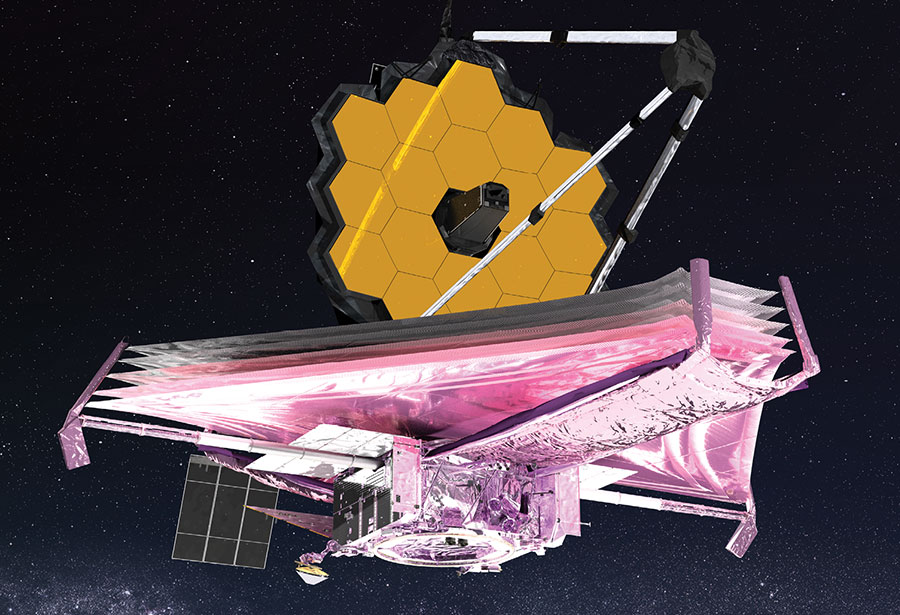
An artist’s conception of NASA’s James Webb Space Telescope.
ENGINEERING EXPLORATION
For the Webb telescope to launch, engineers designed a series of intricate folds to collapse the 70-foot-wide device onto the tip of a slender rocket. Once in orbit, the 14,300-pound origami project expanded in a carefully sequenced ballet of silicon-coated limbs. Its successful deployment was unlike any feat of engineering in global history.
Aerospace engineers are no strangers to high stakes prototypes. That’s a consequence of working in an industry on the leading edge of exploration. Often, they begin development with only an idea and a blank piece of paper. Over the years, many budding aerospace engineers at UTA have gotten hands-on practice for their future carers from what may seem like an unlikely place: building cars.
Every year, students in UTA’s Formula Society of Automotive Engineering (FSAE) group construct a formula racing car from scratch. Under the supervision of Robert Woods, professor of mechanical and aerospace engineering (MAE), students manage the automobile design from initial drawings through race day. In the weeks before competition, the automotive shop converts into an unofficial dormitory, and Maverick engineers work through the night to perfect the vehicle.
The hard work pays off. UTA’s FSAE racing team is one of the most successful student race car programs in the nation, having won eight championships in the United States and three abroad. Each year, by the time they return from competition, the team’s members have received several job offers.
Erian Armanios, chair and professor of MAE, says his students’ experiences on the ground prepare them for work in the sky.
“The reason that FSAE students are desirable to aerospace companies is because they fundamentally understand each phase of the design process,” Dr. Armanios says. “Their knowledge is grounded in practical experience, and they are ready for real-world challenges.”
To maintain students’ 100% job-placement rate, Armanios says his faculty continually evaluate their research to address timely, essential issues on the leading edge of engineering.
At the end of her studies in the Advanced Materials and Structures Lab, Katya Bostaph, an MAE alumna, says her skills were so specific she worried she wouldn’t find a job. On the contrary, her talents in X-ray computed tomography, or CT scanning, made her a valuable hire for the position of nondestructive evaluation engineer at SpaceX.
“I absolutely would not have the job I have today if it weren’t for the education and resources I received at UTA,” Dr. Bostaph says. uta
